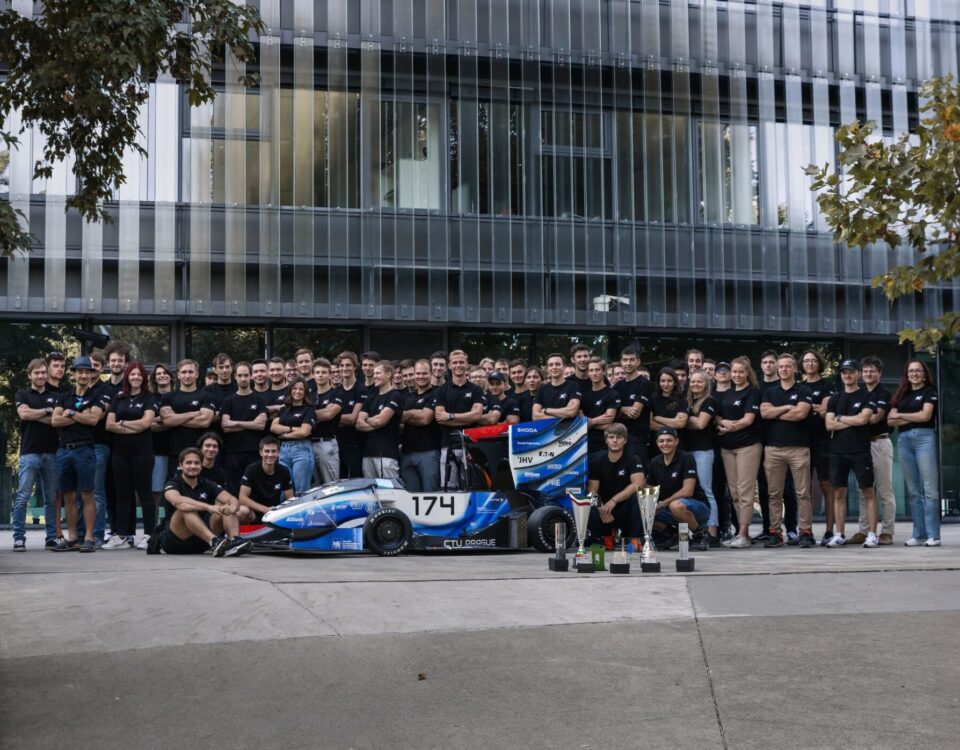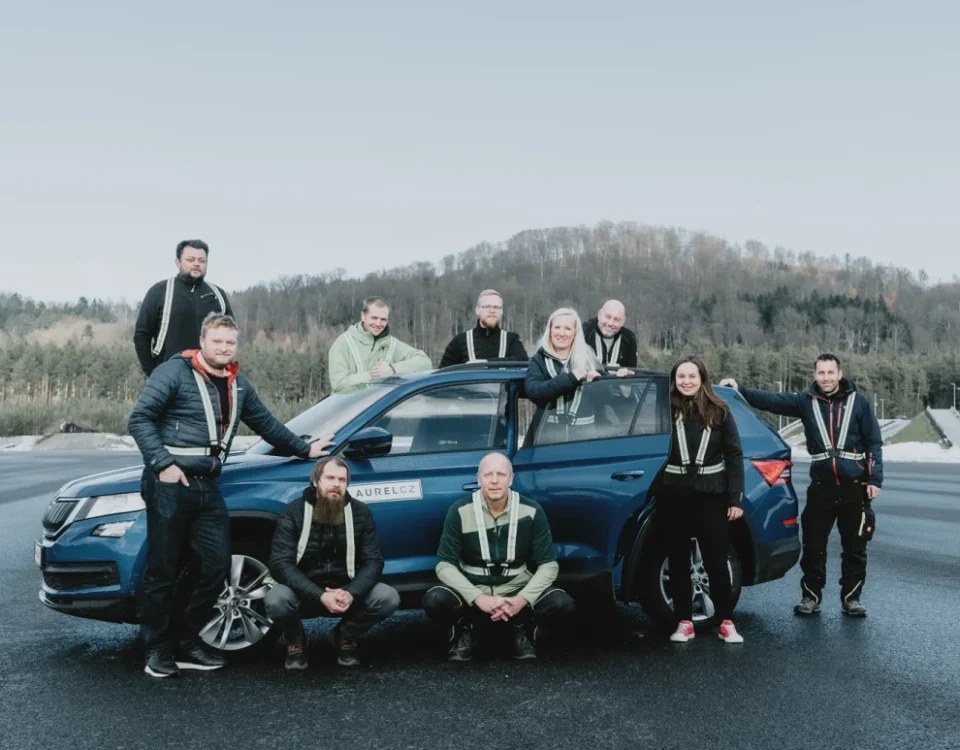Imagine driving down a busy city street. Suddenly, a pedestrian steps out from behind a parked van, eyes fixed on their phone. Before you can even move your foot toward the brake, your car stops sharply—but safely. A scenario that until recently belonged to science fiction is becoming reality. Technologies like these, with the potential to save lives, are being tested in the heart of Europe. At AUREL‘s modern proving ground in Břehyně near Doksy.
Gathering of leading experts at the AUREL Proving Ground
The ViL Tour 2025 professional conference was far more than just a showcase of technology. It marked a major shift in the methodology of developing and validating autonomous vehicles. It was no coincidence that the event took place at AUREL’s Development and Innovation Centre. The Czech Republic is quietly becoming a key player in the evolution of autonomous driving. The secret behind this success lies in the acronym ViL – Vehicle-in-the-Loop. It is a revolutionary method that brilliantly connects the real world with the limitless possibilities of virtual reality.

A flight simulator for your car?
How does it all work? Imagine a flight simulator, but for cars. On the test track sits a real vehicle with a real driver, whose engine, brakes, and suspension behave exactly as they would in real life. The key difference lies in what the car “sees.” Its sensors – cameras and radars – aren’t connected to the physical surroundings, but to a powerful computer that projects a virtual environment in real time. The vehicle thus responds to digital obstacles, simulated traffic jams, pedestrians, or sudden weather changes.
This approach solves a fundamental challenge. For an autonomous vehicle to be truly safe, it would need to drive millions of kilometres in real traffic, experiencing every imaginable and unimaginable situation. That’s not only time-consuming and costly, but also extremely dangerous. Thanks to ViL technology, engineers can safely test even the most critical scenarios and fine-tune driver-assistance systems to absolute perfection.
What was tested and what will be standard in tomorrow’s cars?
The ViL Tour 2025 event was organised by the Czech company AUREL, in collaboration with Datron Technology and Brno University of Technology (VUT). It brought together leading German technology companies as well as students, including the eForce Prague Formula team from the Czech Technical University in Prague (ČVUT). The event showcased both new versions of existing advanced systems and completely new technological solutions. Participants had a unique opportunity to glimpse the future of modern vehicle development and autonomous systems.
“We are deliberately helping to create an exclusive platform for industry leaders. The future of automotive safety and autonomy is being built through close collaboration and knowledge sharing. The success of the first ViL Tour confirmed the strong market interest in combining real-world testing with simulation. Here at the AUREL Proving Ground, we are demonstrating that the Czech Republic has the potential to become a key European player in this high-tech discipline,” said Zdeněk Svoboda, Head of the AUREL Proving Ground.
What could be seen?
- Autonomous Emergency Braking (AEB): This system uses radar and cameras to continuously monitor the area in front of the vehicle. During the test, the car flawlessly stopped before a virtual pedestrian that suddenly crossed its path—demonstrating its ability to prevent a collision faster than a human driver could. The demonstration was provided by IPG Automotive (Germany).
- This system not only maintains a steady speed but also uses sensors to monitor a safe distance from the vehicle ahead. In a simulated complex traffic situation, it smoothly slowed down when another car suddenly merged in front and then accelerated back to the preset speed once the lane was clear. The demonstration was provided by MdynamiX (Germany).
- The technological capabilities of the AUREL Proving Ground were presented by Mr. Zdeněk Svoboda from AUREL (Czech Republic).
- Cyclist Protection (“Dooring Test”): A particularly dangerous situation in urban traffic occurs when a parked car door is opened directly into the path of an approaching cyclist. The tested system successfully detected the virtual cyclist in time, warned the occupants, and, if necessary, temporarily prevented the door from opening. This technology was presented by GeneSys (Germany).
- The simulation of GNSS signals for precise positioning was presented by Datron Technology (Czech Republic).
- The creation of digital twins of real-world environments was presented by 3D Mapping Solutions (Germany).
- Robotic vehicle control was presented by Stähle Robot Systems (Germany).
- A number of demonstrations took place on the proving ground, including autonomous vehicle driving in practice during test rides.
The Czech Republic as Europe’s technological leader
The Czech Republic ranks among the most respected technological destinations, and the success of the event was to be expected. The combination of cutting-edge development, innovative infrastructure, and strong connections with the academic sphere, represented by Brno University of Technology (VUT) and the Czech Technical University in Prague (ČVUT), creates ideal conditions for advancing solutions in autonomous mobility and digital twin technologies. Participants had the opportunity to present their projects, learn about the work of their peers, including international approaches, and above all, expand their professional networks. The AUREL Proving Ground is increasingly establishing itself not only as an excellent host but also as a recognised research complex. In the long term, it has all the prerequisites to become one of Europe’s strategic centres where safer and smarter mobility is being developed.
If you are interested in autonomous mobility, the AUREL testing and development proving ground, or digital twin technologies, please contact Zdeněk Svoboda, Head of the Development and Innovation Centre.












